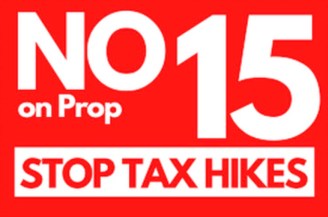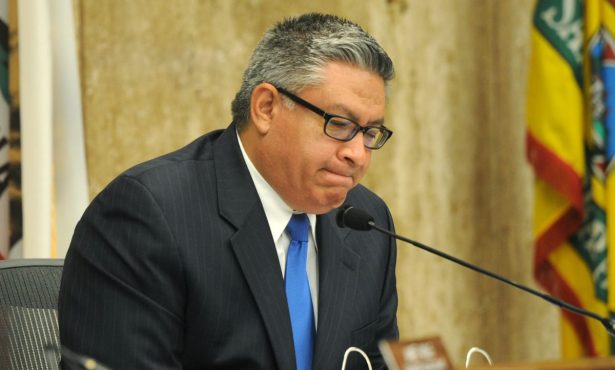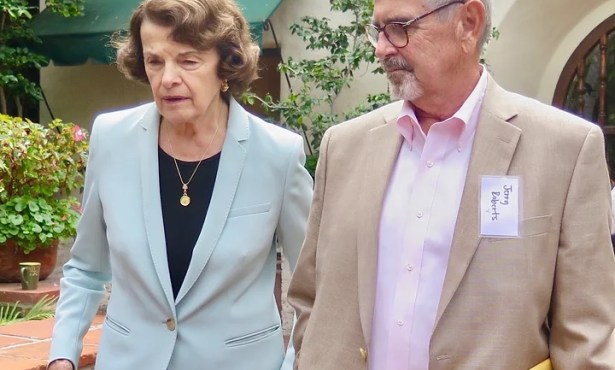Poll: Prop. 15, Measure That Seeks to Rewrite California’s Landmark Proposition 13, Holds Small Lead
Contentious Initiative Would Raise Commercial Property Taxes by Billions

This article originally ran at Newsmakers with Jerry Roberts.
A bare majority of likely voters currently supports Proposition 15, a contentious November ballot initiative backed by public employee and teacher unions that would raise property taxes for many corporate and commercial property owners by $7-12 billion annually, a non-partisan poll shows.
The Public Policy Institute of California, a San Francisco–based independent research organization, reported last night on its new statewide survey, which found that 51 percent of voters say they plan to vote back Prop. 15, while 40 percent are opposed and 9 percent are undecided.
The initiative is a consequential and high-profile measure that would rewrite the state’s 1978 landmark Proposition 13, Prop. 15 would create what is known as a “split roll” property tax system in the state’s 58 counties, by assessing commercial and industrial property via a different method than residential real estate:
- Tax bills for homeowners, now based on the purchase price of their property, would not change if the measure passes;
- Tax bills on business real estate worth more than $3 million would increase — by an aggregate amount estimated variously between $6.5 and $11.5 billion a year — because Prop. 15 would require that commercial property begin to be assessed on current market value, instead of purchase price.
In the six-plus weeks between now and the Nov. 3 election, Prop. 15 is expected to be the focus of tens, perhaps hundreds, of millions of dollars in media advertising, as business interests led by the California Chamber of Commerce and the California Retailers Association seek to defeat the measure, whose chief sponsors include the powerful California Teachers Association and Service Employees International Union.
Get the top stories in your inbox by signing up for our daily newsletter, Indy Today.
“Californians are divided on Proposition 15, with Republicans and Democrats, younger and older voters, and renters and homeowners showing widely different support for this tax and spending initiative,” said Mark Baldassare, PPIC’s President and CEO.
How we got here: The big-spending showdown between business and labor interests has been brewing virtually since the landslide passage of the Prop. 13 tax cut in 1978.
Opposed by then-Governor Jerry Brown and most elected officials throughout the state, Prop. 13 won overwhelmingly, fueled by widespread resentment over spiking tax bills at a time when state government held a $5 billion surplus. Its passage ignited a national tax-cut crusade that became a crucial element in the broader movement that helped elect President Ronald Reagan, ushering in an era of anti-government conservatism.
The campaign for Prop. 13 was led by Howard Jarvis, a curmudgeonly Los Angeles grassroots anti-tax crusader who also headed the California Apartment Owners Association, one of many business groups that benefited greatly from passage of the iconic constitutional amendment.
Under Prop. 13, all assessed valuations were automatically reset to 1975 levels, and property tax bills then were pegged to one percent of that amount; going forward, annual increases were limited to 2 percent of the previous bill. A property could be reassessed at market value only when it was sold.
The result was about $7 billion in annual savings in the first year for property owners; local and state governments, along with school districts, were forced to pare back expenditures, and many Democrats and advocates for education and social welfare programs have routinely complained that public service budgets never have caught up.
But voters maintained their support for Prop. 13, and it became known as the “third rail” of California politics, which politicians were loathe to attack.
Until now.

A big tax shift: Although Jarvis and the Prop. 13 campaign in 1978 highlighted the plight of elderly homeowners being taxed out of their homes at the time, in the decades that followed, corporations which own and operate commercial property — bank and other office buildings, shopping malls and industrial parks, for example — have benefited tremendously from California low property taxes.
When such properties have been sold, supposedly requiring higher, market-rate revaluations, critics of the system have complained of “loopholes,” created by artful accounting practices used in the transactions to avoid legally triggering the “change of ownership” required for a reassessment, which they say have benefited large corporations at the expense of homeowners.
For example, the progressive California Tax Reform Association in 2010 researched historic tax information from the Board of Equalization and assessors in 55 counties.
They reported that since the passage of Prop. 13, the portion of taxes paid by homeowners in many counties increased significantly, while that paid by corporations decreased. From the report:
“The data is consistent throughout the state: in virtually every county in the state, the share of the property tax borne by residential property has increased since the passage of Proposition 13 in 1978, while the share of the property tax borne by non-residential property has decreased.
“Some examples: in Contra Costa County, the residential share of the property tax went from 48% to 73%. In Santa Clara County, the residential share went from 50% to 64%, despite massive industrial/commercial growth. In Los Angeles County, it went from 53% to 69%. In Orange County, it went from 59% to 72%.
“And there is no counter-shift in any counties at any level of significance. We looked at the data from numerous angles but different approaches only led to marginal changes in the numbers and did not affect the trends.
“We also looked at whether employment growth — an indication of the commercial/industrial sector — outstripped residential population growth, as it did in many counties, but the burden still shifted away from non-residential property, as it did in San Francisco (56% to 67% despite limited population growth and substantial employment growth).
“With regard to the question: how has the burden of the property tax changed in the last 30 years? The answer is: it has shifted markedly away from the commercial sector and towards the residential sector.”

Bottom line: That is the crux of the argument that will rage over the airwaves and on social media in the weeks between now and the election.
As a political matter, the slim majority favoring Prop. 15, as reflected in the PPIC poll, is dangerously low from the perspective of its sponsors.
Historically, California voters rejected nearly two-thirds of the 376 initiatives that qualified for the ballot between 1912 and 2017, according to the most recent study by the Secretary of State. Political professionals have learned that when voters are uncertain or confused by a complex ballot measure, they tend to vote “no.”
Given the huge sums that corporate interests are expected to pour into defeating Prop. 15 by “educating” voters about it over the next seven weeks, a 51 percent majority is a very small cushion.
Recommended reading: The new PPIC survey, conducted Sept. 4-13, has a margin of error of plus or minus 3.5 percent. From the poll findings on Prop. 15:
“Among likely voters, 51 percent favor and 40 percent oppose, with Democrats (72%) far more likely to support than independents (46%) and Republicans (17%).
“Less than half of homeowners (47%) would vote yes, compared with 56 percent of renters. Younger Californians are much more likely than older residents to support Proposition 15 (60% ages 18 to 44, 46% age 45 and older). Support is highest among likely voters in the San Francisco Bay Area (62%) followed by those in Los Angeles (54%), Inland Empire (51%), Central Valley (47%), and Orange/San Diego (41%).”
PPIC’s poll also is packed with information about the pre-election political state of play in California, including new data on a ballot fight over affirmative action, the presidential race, key congressional campaigns, and public opinion about Gov. Newsom and other state officials, as well as the pandemic and race relations.
You can find the entire survey here.
We also recommend the excellent primer on all 12 state ballot propositions prepared by CalMatters, which you can find here.
Every day, the staff of the Santa Barbara Independent works hard to sort out truth from rumor and keep you informed of what’s happening across the entire Santa Barbara community. Now there’s a way to directly enable these efforts. Support the Independent by making a direct contribution or with a subscription to Indy+.




You must be logged in to post a comment.